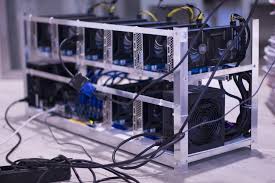It is not a physical asset, but a computer file stored in a digital wallet application. In 2009, Bitcoin was officially launched, and the concept of Bitcoin mining came into being.

In simple terms, miners are responsible for confirming transactions and creating new coins, and they are also rewarded in Bitcoin for their efforts.
What is Bitcoin?
It is not a physical asset, but a computer file stored in a digital wallet application. Bitcoins can be sent to others using your digital wallet and vice versa. All transactions in Bitcoin are recorded in a public list called the blockchain. It is a decentralized technology that facilitates the management and recording of transactions. However, cryptocurrency is a payment method that uses blockchain technology.
What is Bitcoin Mining?
Bitcoin mining is the process of verifying bitcoin transactions and minting new coins, or it can be said that new bitcoins enter circulation. Because Bitcoin is decentralized, there is no central authority that regulates transactions or issues coins like government-backed currencies. Bitcoin miners can be anyone.
To record transactions, Bitcoin uses the blockchain, a public ledger that contains all Bitcoin transactions. Miners check each block and, once confirmed, add it to the blockchain. Miners are rewarded in Bitcoin when they add blocks. That said, the Bitcoin reward miners receive is an incentive to assist with the main purpose of mining: to legitimize and monitor Bitcoin transactions to ensure their validity.
How Bitcoin Mining Works
Bitcoin mining is mainly to obtain Bitcoin through algorithms. In the Bitcoin system, a node will successfully mine every 10 minutes, and once someone succeeds in mining, the Bitcoin system will reward the person with a certain number of bits. coins, this amount is controlled by an algorithm. Bitcoin mining is to determine the distribution of currency according to the effective work of mining contributions.
An important thing about Bitcoin mining is that the network changes the difficulty of maintaining a block output every 10 minutes. Mining difficulty increases when more miners join, or they start using mining rigs with more processing power.
Understanding the Risks of Bitcoin Mining
The biggest risk of Bitcoin mining is that you can’t recoup your startup costs. ASIC miners are not cheap to be worth, and those with enough processing power usually cost at least $1,000. While you can find cheaper options, remember that paying less also means earning less.
It is possible to get your money back and eventually make a profit, but mining returns are far from stable. If the price of Bitcoin goes down, your income goes down too. An increase in mining difficulty could cut into any profits.
If you want to learn more about Bitcoin mining, please contact us today!
